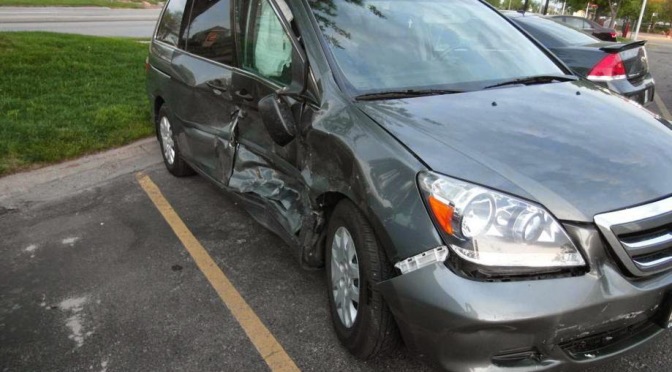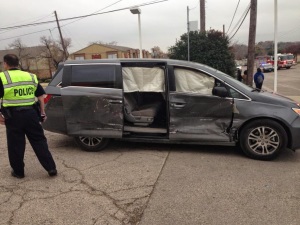 A few weeks ago, I wrote about the dangers of side impact collisions and the safest cars of 2015 based on an intrusion metric measured by the IIHS in their side impact collision tests. Essentially, side impact collisions are the collisions most likely to take your life or the life of your loved ones, compared to front and rear-impact collisions. We’ve all heard of these; they’re the t-bones and broadside collisions that happen when two vehicles meet at intersections at high speeds. Sometimes they occur when two vehicles are traveling in opposite directions and one loses control in a skid and winds up broadsided by the other after ending up in the opposing lane. And they’re a lot more likely to be fatal simply because they involve large transfers of energy with very little material and space to absorb it.
A few weeks ago, I wrote about the dangers of side impact collisions and the safest cars of 2015 based on an intrusion metric measured by the IIHS in their side impact collision tests. Essentially, side impact collisions are the collisions most likely to take your life or the life of your loved ones, compared to front and rear-impact collisions. We’ve all heard of these; they’re the t-bones and broadside collisions that happen when two vehicles meet at intersections at high speeds. Sometimes they occur when two vehicles are traveling in opposite directions and one loses control in a skid and winds up broadsided by the other after ending up in the opposing lane. And they’re a lot more likely to be fatal simply because they involve large transfers of energy with very little material and space to absorb it.
I discuss these crashes fairly often on this blog, since a big part of what I focus on is how to avoid all kinds of crashes in the first place in order to create a safer driving community, both in the United States and abroad. Here’s an example of a side impact collision that involved a minivan–a Honda Odyssey, to be specific. The above image from online user Odyssey #1 involved a side impact collision where his wife was t-boned by a large pickup truck. She survived uninjured. Yet there are thousands of such crashes each year that result in grave or fatal injuries.
As I noted in the previous article, this is a problem, and it’s one that can be tackled in a number of ways. This article will focus on one particular way of mitigating, if not solving, that problem with respect to minivans. I’ll review some material covered from the initial article on cars, so if you’re simply interested in the vehicles themselves, skip down to the section with pictures.
Solving the side impact problem: weight and speed
Once again, this is essentially a speed and weight problem, which, pulling back, makes it an advocacy problem, and a societal problem at large. In the United States, we have very few laws restricting the sizes of vehicles people can drive, and we aren’t nearly as consistent as our fellow rich countries are in restricting how quickly people can drive them.
 A basic example of the weight issue involves RVs. It’s possible to drive a 25,000 pound vehicle (i.e., a Class A Recreational Vehicle) with the same license necessary to drive a 2,000 pound one (e.g., a Smart Car). One vehicle weighs more than 12 times the other, but they can both be driven by drivers of any age or level of experience.You don’t need any more training, and you don’t have to abide by different speed limits.They can be driven on the same roads and the consequences can be devastating.
A basic example of the weight issue involves RVs. It’s possible to drive a 25,000 pound vehicle (i.e., a Class A Recreational Vehicle) with the same license necessary to drive a 2,000 pound one (e.g., a Smart Car). One vehicle weighs more than 12 times the other, but they can both be driven by drivers of any age or level of experience.You don’t need any more training, and you don’t have to abide by different speed limits.They can be driven on the same roads and the consequences can be devastating.
Besides that, there’s the issue of speed. People regularly speed in city and highway traffic, and are highly resistant to speed enforcement cameras or police enforcement of speed limits. We even sell a range of devices to enable people to speed while reducing their risks of being detected by police. And states across the country keep raising speed limits, even though crashes become disproportionally more dangerous with speed.
How to increase your odds of not dying in a side impact collision
Unfortunately, even though the problems are easy to identify (lots of heavy vehicles traveling quickly everywhere), we’re a long way from making the legislative changes necessary to reduce the wide weight discrepancies and dangerously high speeds that make side impact collisions so likely to be fatal. Until and unless those societal changes come to pass, as I noted earlier, the best ways to protect yourself and your loved ones from dying in t-bone collisions today are to either:
1.) Avoid driving (e.g., by using public transportation or by cycling or walking).
2.) Limit driving (by the same measures above and by combining trips).
3.) Drive the most side-impact-resistant vehicles possible.
Ultimately, to truly bring an end to side impact collisions, as well as to all collisions, we’re going to need to be forced to invest in the first two measures. I’d consider self-driving or autonomous vehicles to be part of “avoiding driving,” even though those aren’t going to eliminate collisions until the vast majority of vehicles on the road are no longer being driven by humans. However, unless you’re in a position to completely follow step 1, you’ll need to focus on 2 and 3. Step 2 isn’t always feasible either, so this post focuses on Step 3, and is specifically related to choosing the safest minivans for side impacts currently available in the US in 2015. I’ll write a similar post for SUVs in the near future. The equivalent article about the safest cars for side impacts in the US in 2015 is here.
Determining which minivans are the safest for side impact collisions by structural integrity (crush distance)
As in the car list, the methodology here is based on the IIHS-measured crush distance in their side impact collision test, which involves a 3,300 SUV-like barrier rammed into the driver’s side of a vehicle at 31 mph. What’s simulated is 143.7KJ of kinetic energy, and a subsection of the IIHS test known as the “structure and safety cage” looks into how close the B-pillar intrudes into the center of the driver’s seat during the collision. Less intrusion is better.
The greater that crush space, given a vehicle’s overall “good” score for the side impact test and presence of airbags, the safer the vehicle. Even though a vehicle might score “good” overall on the side impact test, would you rather sit in one with a 3 cm crush space or one with a 30 cm crush space?
That’s what this list is based on. Every cm between you and a life-ending amount of energy is a life-preserving cm of survival space. Let’s see who’s doing the best job at it right now. As there are so few minivans currently sold in the United States, I pulled data on all of them. All data is accurate as of Saturday, May 23rd, 2015, and all images are courtesy of the IIHS.
The 6 safest minivans for side impact collisions in 2015
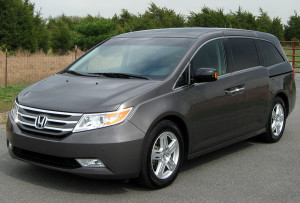 18.5 cm – 2014-2015 Honda Odyssey.
18.5 cm – 2014-2015 Honda Odyssey.
This is the safest minivan in the United States today when it comes to side impact crash survival, based on its 18.5 cm of crush protection. It’s notable that this score wouldn’t even place the Odyssey among the top 9 cars for side impact protection, which spanned 19 cm to 24 cm at the time of that article. However, given the additional ride height of the Odyssey compared to that of the average car, it would have additional advantages in a side collision that aren’t visible in this metric.
The side impact case study I describe above involves an ’11 Odyssey, which had 18.5 cm of crush protection. That’s what that kind of intrusion protection looks like in the real world. It saves lives.
The 18.5 cm of intrusion resistance generally matches Honda’s claims several years ago before the debut of the current generation Odyssey, when they promised a 3.7x improvement in side intrusion resistance compared to the ’05-’10 Odyssey. That generation Odyssey offered 6 cm of resistance, so Honda’s claims were a bit far-fetched (the improvement was closer to 3.1x), but mostly accurate. That generation had an estimated driver’s death rate of 18.
Honda stepped up their performance here in the ’11 model year, for which the IIHS estimated the Odyssey to have a zero driver death rate, which is a nod to the overall strong track record of this vehicle and its drivers. It was only the second minivan to achieve this honor after the ’08 Sienna. Having compared the Sienna and Odyssey before, I’d place the Odyssey in the lead as the safest minivan in the country in a range of other measures as well.
My full 3 across car seat guide to the Odyssey is available here.
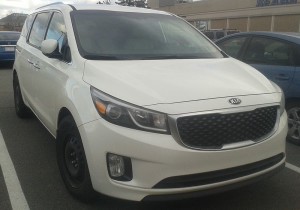 14.5 cm – 2015 Kia Sedona.
14.5 cm – 2015 Kia Sedona.
The newest version of the Kia Sedona is an impressive vehicle all around, with strong safety scores in every area and a good amount of side intrusion protection. The Sedona is well worth considering as an alternative to the Odyssey and Sienna for anyone interested in a safe and reliable minivan.
My full 3 across car seat guide to the Sedona is available here.
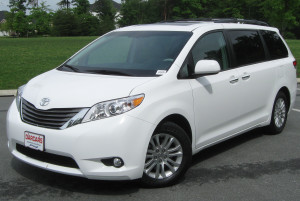 14-15.5 cm – 2014-2015 Toyota Sienna.
14-15.5 cm – 2014-2015 Toyota Sienna.
Despite having one higher intrusion score than the Sedona at 15.5 cm vs 14.5 cm, I placed the Sienna after the Sedona due to its also having a lower score at 14 cm in a separate test. It’s better to be conservative when it comes to issues of life and death, after all. The Sienna is a solid vehicle but continues to struggle with its head on collision passenger injury measures as tested by the NHTSA, and I wouldn’t recommend it before the Odyssey or Sedona. The ’11 Sienna also had a disappointingly high driver death rate of 27. In comparison, the previous generation, as I’ve noted above, had a DDR of 0 for the ’08 model year.
My full 3 across car seat guide to the Sienna is available here.
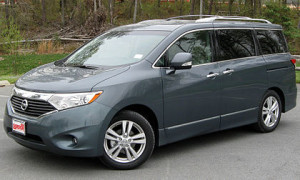 10 cm – 2011-2015 Nissan Quest.
10 cm – 2011-2015 Nissan Quest.
I’ll be honest; I forgot to include the Quest at the start because Nissan sells so few of them. However, it still deserves mention given how few choices we have in the US for minivans. The Quest is the only vehicle on this list that doesn’t have a “good” roof score (it’s “acceptable”), and it also has a dreadful “poor” small overlap front score that Nissan would do well to address.
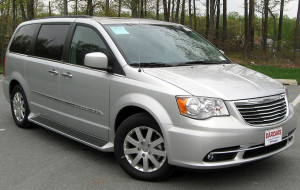 8-10.5 cm – 2011-2015 Chrysler Town & Country / Dodge Grand Caravan.
8-10.5 cm – 2011-2015 Chrysler Town & Country / Dodge Grand Caravan.
The most affordable, yet least reliable minivans in the country are the Chrysler twins: the Town & Country and the Dodge Grand Caravan. I wouldn’t recommend this minivan unless you were simply unable to purchase any of the aforementioned ones, simply due to how prone it is to needing repairs. There are better–and safer–vehicles out there. The Chrysler/Dodge minivan continues to suffer from a poor small overlap score, and is the only vehicle on the list to not feature at least an acceptable score in that test. The ’08-’11 twins had near identical DDRs at 25 and 27, respectively.
My full 3 across car seat guide to the Town & Country is available here while my Grand Caravan guide is available here.
How to choose a minivan to keep you safe in side impact crashes
In conclusion, the current crop of minivans is much smaller than the current crop of cars available in the United States; you really only have 6 models to choose from, and 2 of those are the same vehicle in different trim levels, which brings your realistic choices down to 5. Of these, I’d only actually recommend 3. This isn’t like with the cars, where you have an embarrassment of riches to choose from in terms of intrusion resistance.
To put it simply, if your top priority is safety and you’re buying a new minivan, buy an Odyssey. If you can’t buy an Odyssey, buy a Sedona. If you can’t buy a Sedona, buy a Sienna. And if you can’t buy a Sienna, buy a used Odyssey, Sienna, or Sedona. Prior to the 2011 generations of the Odyssey and Sienna, the Sienna was the superior vehicle, but that changed with the 2011 generations. Time will tell if it changes back again.
It’s also worth noting that the side impact intrusion metric is just one that I happen to be looking at in the complex web of factors that interrelate in car safety overall, or even in side impact protection in particular. The 8-10.5 cm in the Chrysler twins isn’t particularly bad, even though it’s nowhere near the best in minivans, never mind among all vehicles on the road right now. It’s very worth noting that the ’08 Sienna, which was the first minivan to achieve a zero estimated driver death rate, had 8.5-9.5 cm of side impact intrusion, which would have made it the third-lowest vehicle on the list here. However, that Sienna also had front torso airbags, which the Chrysler twins at the time did not.
We can’t control everything. The safest option is still not driving at all, followed by driving as little as possible. But if you’ve got to drive, drive safely, and do your best to choose a safe vehicle. To that end, my safe family vehicle analyses for cars and SUVs are worth reading.
I hope you enjoyed reading this as much as I enjoyed writing it. It’s exciting to see where we’re headed in vehicle safety these days. I’ll have a followup article soon comparing comparing SUV safety along the same metrics. Stay tuned, remember to avoid common mistakes parents make with car seats, and check out some 3 across car seat guides while you’re here.
If you find the information on car safety, recommended car seats, and car seat reviews on this car seat blog helpful, you can shop through this Amazon link for any purchases, car seat-related or not. Canadians can shop through this link for Canadian purchases.

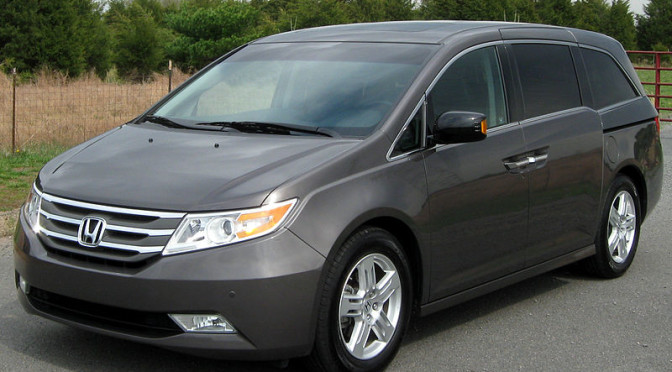

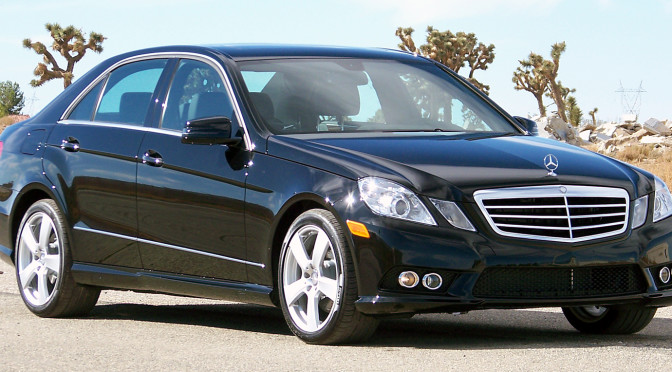
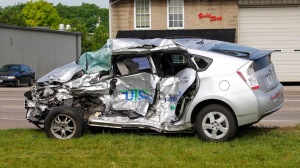 Among front, side, and rear-impact collisions, side impacts are the most likely to be fatal. These are the t-bones, the broadside crashes that occur at intersections and more rarely when vehicles skid sideways into the paths of oncoming vehicles. They’re much more likely to be fatal for the basic reason that there’s a lot less material between you and the 3,200 lbs (the average passenger vehicle weight today in the US) of metal and plastic careening toward you at 30, 40, or 50 miles per hour.
Among front, side, and rear-impact collisions, side impacts are the most likely to be fatal. These are the t-bones, the broadside crashes that occur at intersections and more rarely when vehicles skid sideways into the paths of oncoming vehicles. They’re much more likely to be fatal for the basic reason that there’s a lot less material between you and the 3,200 lbs (the average passenger vehicle weight today in the US) of metal and plastic careening toward you at 30, 40, or 50 miles per hour.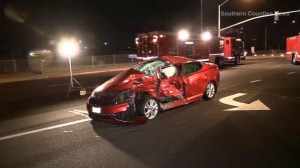 Personally, I’d be in favor of much stricter weight limits in passenger vehicles in the US, as well as on much stricter enforcement of speed limits and general lowering of speed limits throughout the US. The heavier a vehicle, the more likely it is to cause damage in a collision. The effects are even more pronounced with speeding, since kinetic energy increases with the square of velocity (KE = .5 * mass * velocity * velocity), rather than proportionally with mass. What that means is that a little bit of speeding can make a crash a lot more severe than a little bit of extra weight, given a particular speed and weight.
Personally, I’d be in favor of much stricter weight limits in passenger vehicles in the US, as well as on much stricter enforcement of speed limits and general lowering of speed limits throughout the US. The heavier a vehicle, the more likely it is to cause damage in a collision. The effects are even more pronounced with speeding, since kinetic energy increases with the square of velocity (KE = .5 * mass * velocity * velocity), rather than proportionally with mass. What that means is that a little bit of speeding can make a crash a lot more severe than a little bit of extra weight, given a particular speed and weight.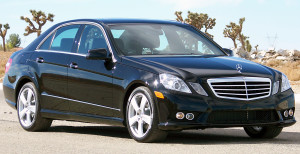
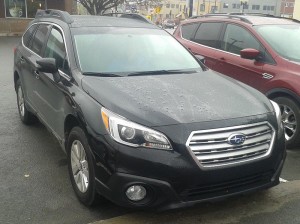
 22 cm –
22 cm – 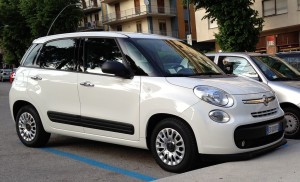 21 cm – 2014, 2015 Fiat 500L.
21 cm – 2014, 2015 Fiat 500L. 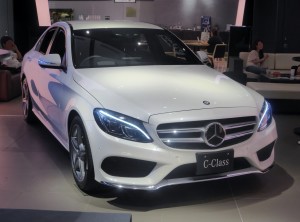
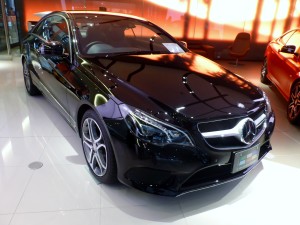
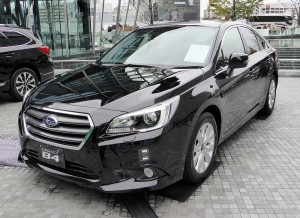
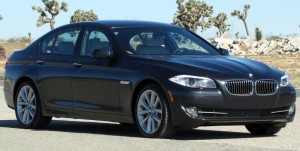 19 cm –
19 cm – 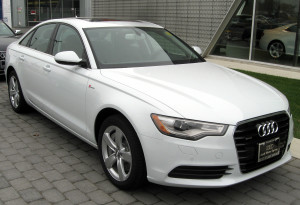
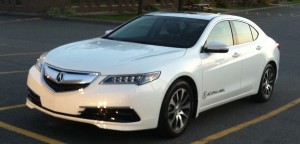
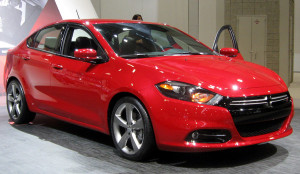

 Who:
Who:

 Who:
Who: